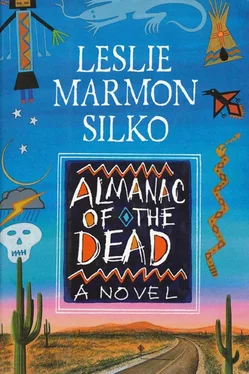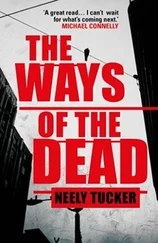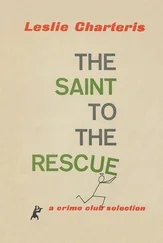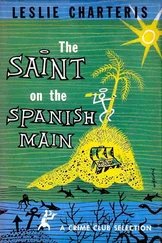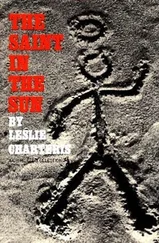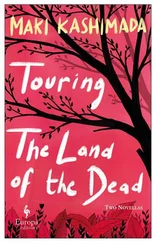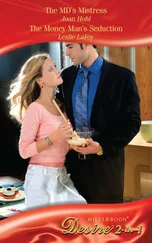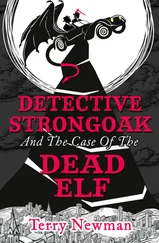Other homeless men and women had witnessed the face-off between the SWAT team and the veterans; in their faces Clinton thought he had detected a flicker of recognition. Clinton had listened to the Barefoot Hopi, and he had talked day and night with the African. Both had preached patience, the patience of the old tribal people who had been humble enough not to expect change in one human lifetime, or even five lifetimes. Maybe not tomorrow or next week, but someday Clinton knew, the other homeless people would remember the defiance of the homeless vets; the dumpy, pale women and their skinny, pale men would remember the absolute surge of pride and power the veterans’ defiance had given them. Like little seeds, the feelings would grow, and the police violence that had rained down on the people would only nurture the growing bitterness.
Clinton had been headed out anyway when the police came looking for him and Rambo-Roy. Naturally the Tucson police had got the details confused and had arrested the first white man and black man they had located wearing camouflage clothing. Clinton had not been sure if it was right for him and Rambo-Roy to let two other “brothers” take the rap for Trigg’s murder. The police claimed they had genetic evidence from the crime scene that linked the two men in police custody to the killing. Clinton and Rambo-Roy both knew any genetic evidence found at the crime scene belonged to them, not the men in police custody. So actually the Tucson police had found no evidence at the scene, but after they had arrested the two men, the police detectives had taken hair and skin-cell samples from the men to put in the evidence bags with other material collected at the murder scene. Rambo said once the police had planted your hair or skin cells at the scene of the crime, you were finished. There was nothing that could be done. So even if Clinton had turned himself in, it wouldn’t be his hair or his skin cells in that police evidence bag. Rambo-Roy said the brothers were doing their part by taking the rap for them. Clinton had to get back to the big cities. He had to try to reach the black war vets before they got misled by fanatics or extremists screaming “Black only! Africa only!” because Clinton had realized the truth: millions of black Indians were scattered throughout the Americas. Africans in the Americas had always been “home” because “home” is where the ancestor spirits are. From the gentle giants, Damballah and Quetzalcoatl, to the Maize Mother, and the Twin Brothers and Old Woman Spider, Africa and the Americas had been possessed.
Clinton was heading for Haiti after he visited some of his black Indian cousins in New York City. Black Indians living in Manhattan had long been supplying aid and arms to the Mohawk nations at war with Canada and the United States. The African had been discreet about the modest financial aid certain African nations had sent to the Mohawks. The African had called the aid a “symbolic gesture” of the solidarity between the African tribal people and the Native American tribal people. Now that black Africans had finally recovered their ancestral land the spirits would not allow the Africans to turn their backs on the tribes of the Americas as they fought to take back their land.
Clinton wasn’t going to waste time with the whiners and complainers who had made wine or dope their religion, or the Jesus junkies, who had made religion their drug. Talking to Weasel Tail and the Barefoot Hopi had given Clinton so many more ideas than he and Rambo-Roy had ever got by themselves. Rambo-Roy and he had been right about the homeless and their plan to organize the homeless poor around an army of homeless war vets. On the Indian reservations the surviving war vets were at the core of the preparations. As Weasel Tail and the Hopi said, they might kill and cripple thousands, or even millions, of us, but those who did survive would indeed become a power to be reckoned with. All around them, all their lives they had witnessed their people’s suffering and genocide; it only took a few, the merest handful of such people, to lay the groundwork for the changes.
Ignorance of the people’s history had been the white man’s best weapon. Clinton had continued to fill his notebook with fragments of the history the people had been deprived of for so long. The Hopi had given Clinton a book that the Hopi said might shine some more light on black Indians. Clinton had written in bold letters at the top of the notebook page Thank you, Herbert Apthekerl
1526
Pee Dee River, South Carolina: Negro slaves rise up, flee to live with the Indians.
1663
Gloucester County, Virginia: Indians aid black and white slaves.
1687
Westmoreland County, Virginia: Negro slaves rebel.
1688
Maryland: “Sam,” slave belonging to R. Metcalfe, leads uprising.
1690
Newbury, Massachusetts: Mysterious white man from New Jersey leads Indian and black slaves to French Canada.
1691
Middlesex County, Virginia: “Mingo” leads other black slaves on rampage.
1702
New York, South Carolina: Mild unrest among slaves.
1708
Newton, Long Island: Indian and black slaves rebel and kill seven whites.
1709
Counties of Surry, James City, and Isle of Wight in Virginia suffer rebellions of Indian and black slaves.
1711
South Carolina: Great terror among whites as “Sebastian” leads other black slaves in uprising.
1712
New York City: Indian and Negro slaves kill nine white men during uprising.
1713
South Carolina: Slave rebellion plot blamed on slave preacher recently arrived from Martinique.
1720
South Carolina: Slave uprising coincides with drought, economic depression, and Indian troubles.
1722
Rappahannock River, Virginia: Slave unrest and conspiracies.
1723
Gloucester and Middlesex, Virginia: Slaves plot to flee to Florida and freedom promised by Spanish officials. Boston, Massachusetts, and New Haven, Connecticut: slaves set fire to numerous buildings.
1727
Louisiana: Captured Indian slave reveals secret outlaw village of “Natanapalle” where runaway black and Indian slaves live.
1729
Virginia: Black slaves flee to Blue Ridge Mountains with guns and agricultural implements.
1730
Louisiana: French arm adult black slaves to fight Chonachee Indians, but blacks conspire with Indians against the white men.
Virginia, South Carolina, Louisiana: Unrest and rebellion blamed on rumor among black slaves that the king had freed all baptized slaves.
1733
Unrest among black slaves increases everywhere after the Spanish government announces all slaves of the British who reach Florida will be free.
1738
Charles Town, Virginia: Conditions approach guerrilla warfare as black slaves try to reach Florida, which they call “the promised land.”
1739
Stono, South Carolina: Uprising of black slaves blamed on Spain’s war with England.
1740
New York City: Slaves poison their masters’ water.
1741
New Jersey: Arson blamed on black slaves.
1747
New York City: Uprising among black slaves.
1751
South Carolina: Law enacted against slaves poisoning masters.
1755
Virginia, Maryland: the French and Indian War causes slave unrest.
1765
South Carolina: “Maroons” hiding in mountains grow more troublesome.
1767
Alexandria, Virginia: Rebellious black slaves.
1771
Georgia: British agent blamed for stirring up black slaves.
1772
Perth Amboy, New Jersey: In the center of the slave trade, a rebel conspiracy is uncovered.
1774
Boston: Black slaves rise up and seek aid of British and Irish. St. Andrew’s Parish, Georgia: Slaves rise up.
1775
North Carolina: Black slaves plot to rise up and join British forces.
Читать дальше
